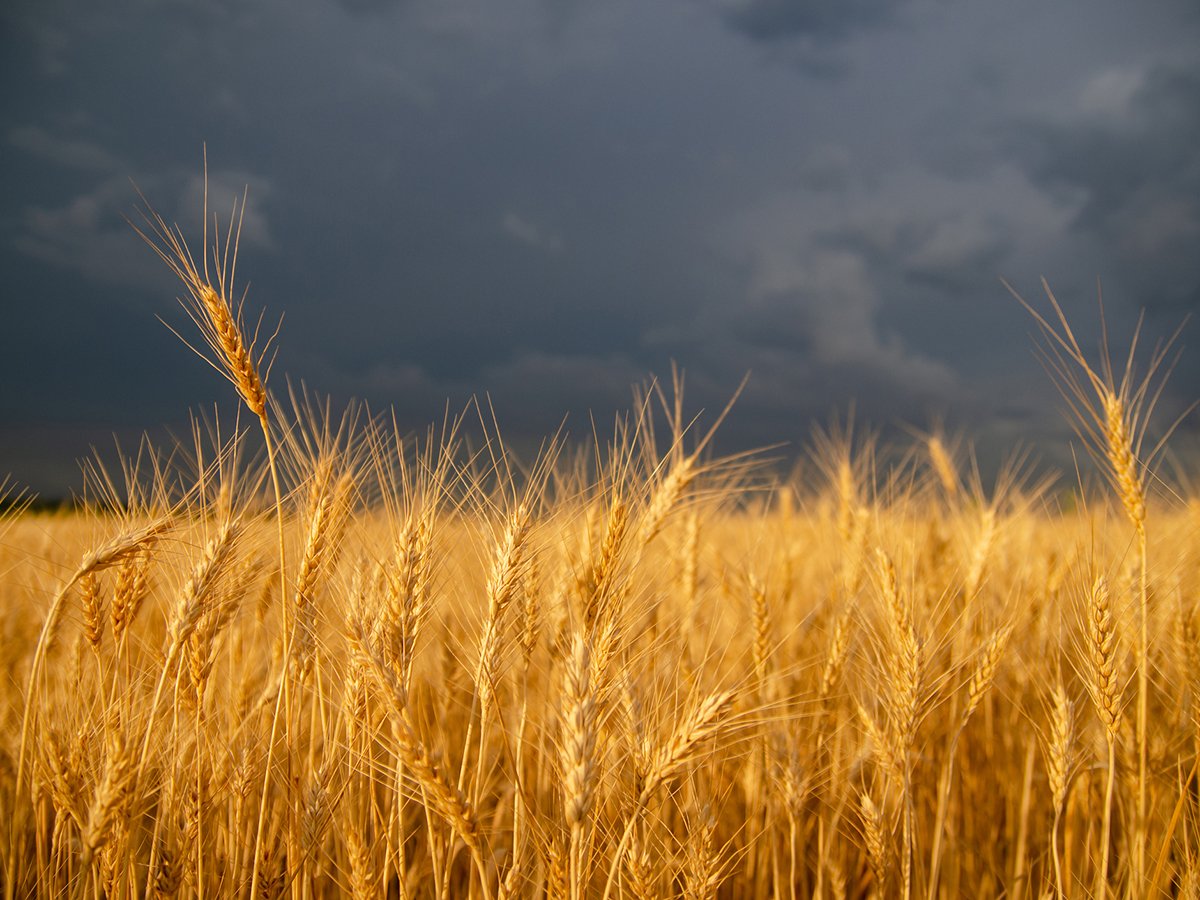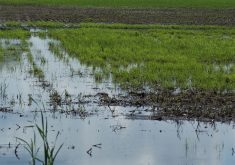Preserving horseradish
Dear TEAM: Do you have a recipe for preserving horseradish, other than with beets? – C.F., Regina, Sask.
Dear C.F.: Horseradish can be preserved as is, or combined with other ingredients to make preserves such as jelly, relish or ketchup. One problem with horseradish is keeping it a white color. Immersing the peeled root in cold, salted water will help.
Chopping horseradish in a food processor, with the liquid called for in the recipe, will prevent watering eyes and stinging noses. This hint comes from my neighbor Beth Riglin, who submits the following recipe using that method.
Read Also

Late season rainfall creates concern about Prairie crop quality
Praying for rain is being replaced with the hope that rain can stop for harvest. Rainfall in July and early August has been much greater than normal.
Pickled horseradish
2 cups grated 500 mL
horseradish
2 cups vinegar 500 mL
2 tablespoons 30 mL
sugar
1 teaspoon salt 5mL
1 tablespoon 15 mL lemon juice
Measure two cups (500 mL) vinegar into food processor. Add pieces of peeled horseradish root, chopping until the vinegar and horseradish rise to the four cup (1 L) mark. Add sugar, salt and lemon juice. The mixture is not cooked, just put in jars and stored in the refrigerator for use in the near future. It also freezes well. Beth freezes horseradish in baby food jars, a handy size for a preserve such as this.
Horseradish/onion ketchup
1Ú2 cup fresh 125 mL
shredded horseradish
1Ú2 cup vinegar 125 mL
1Ú2 cup ketchup 125 mL
4 cups apple pulp 1 L
2Ú3 cup white sugar 150 mL
1Ú4 cup minced onion 50 mL
1 teaspoon salt 5 mL
1Ú2 teaspoon soy sauce 2 mL
1Ú4 teaspoon paprika 1 mL
1Ú4 teaspoon garlic powder 1 mL
Mix ingredients together in a large saucepan. Boil for three minutes or more to cook the onions and horseradish. Seal in jars.
Horseradish jelly
From J.A., Red Deer, Alta.
1 cup chopped 250 mL
peeled, fresh horseradish
1 cup white vinegar 250 mL
31Ú2 cups white sugar 875 mL
1Ú8 teaspoon turmeric 0.5 mL
1Ú2 teaspoon salt 2 mL
3 ounce pouch 85 g
liquid pectin
Grind horseradish fine with vinegar. A food processor is recommended. Stir together with sugar, turmeric and salt. Let stand 15 minutes. Bring to boil over low heat. Increase the heat to a full rolling boil, stirring constantly. Add pectin, stirring, and boil for one minute. Remove from heat and skim. Pour into sterilized jars and seal.
Makes four half pints. Takes about 24 hours to set.
Preserved horseradish
Fill sterilized pint jars about 2Ú3 full of grated fresh horseradish. Add one teaspoon (five mL) salt to each jar. Bring vinegar to a boil and pour over the horseradish, filling the jars. Seal at once.
Source: America Cooks by the General Federation of Women’s Clubs. Published by Longmans Canada Ltd.
Snowbirds
Thanks to J.R., Dodsland, Sask. for her letter about finding a place to stay when going south for the winter. Your letter has been forwarded to W.M., Breton, Alta.
In part, she writes: “We started out like they did, ‘hoteling’ along the line. We did not take long to decide we preferred the city of Yuma, with a population of 70,000, to the big city of Phoenix (Mesa). There are increasing numbers of snowbirds at Yuma every year; 1996-97 saw 80,000. It is getting more difficult to find lots and rigs to rent.
“There is an old saying that it’s not what you know, but who you know. Talk it up with friends and neighbors all summer and gather information.
“If you rent for a few months, it gives you a chance to look around and see what is available, what you want, what you need, what you want to pay. Be sure to book early, October or November or a year ahead. By Jan. 7 it is hopeless.
“People ask, ‘What do you do in Yuma?’ We have fun. We swim, dance, shuffle, play pool, pick grapefruit and oranges. No one to call you Grandma, you can frolic on your bicycles like teenagers. We have fun.”
Answering requests
Dear TEAM: In your column of July 17 issue, re: the article about rhubarb removing stains, I would like to know how much rhubarb and water. – W.V., Portreeve, Sask.
Dear W.V.: Our first correspondent that wrote about removing stains with rhubarb filled a large pot (canner or dutch oven) three-quarters full with water and added two or three cups (500-750 mL) fresh or frozen chopped rhubarb.
















